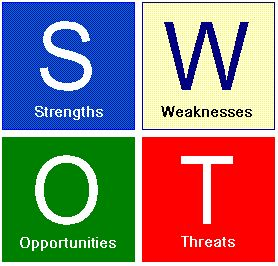Realizing Your Purpose
A lot of what happens in business seems to be based on default. What do I mean by default? Well it goes like this: “I lost my job so I went into business myself”, “These clients buy my product so, this is the audience I sell towards”, “I was making all the money for the company, so I decided to go out on my own”, or “I was a really good engineer, carpenter, programmer, haircutter, etc, etc, so I decided to go into business for myself”. This is exciting, but it doesn’t create a great business until you determine its purpose for existence, beyond making a living.
If you’ve ever wondered why it is that other companies seem to be doing so well, and you are always struggling, it could be because you haven’t found or awakened to your true purpose for being in business. Making sure that purpose is always alive in your daily and weekly interactions and the culture of your business is essential to real success.
In my favorite book on leadership called Leadership Wisdom from the Monk Who Sold His Ferrari, Robin Sharma wrote about purpose and why it makes a difference. He used the example of how Southwest Airlines became great, not because they were charging low fares, but because they had a greater purpose of making it possible for grandparents to see their grandkids and small business to expand their markets. This awareness of a greater purpose allows people to move beyond working just for a paycheck.
Purpose was also a key aspect of Built to Last by Jim Collins and Jerry Porras. If they were faced with choosing between core purpose and core values for guiding and inspiring an organization, they said they would likely choose core purpose. To them, the core purpose captures the soul of an organization and is like “a guiding star on the horizon – forever pursued, but never reached”. In other words, an organization is always stimulating change and working to move closer to that purpose, but unlike a goal, it’s never fully realized.
When a company or organization finds their higher meaning for being in existence, it will align the people and engage their hearts. With a purpose you can show your organization that their work touches people’s lives, directly or indirectly. People tend to work harder where they find fulfillment, and giving your people a purpose for what they do day to day could be just what you need to create an environment where great things are possible.
Have you discovered your core purpose for your company, or possibly for your own life? If not, you should check out this article “Building Your Company’s Vision” by Jim Collins on how to realize your core purpose.





 to do your thing. What an informative experience!
to do your thing. What an informative experience!  How the tables turn, wouldn’t you say?! It’s fun to see the little guy with the big idea get brushed off by the big corporation, then go on to dominate or even wipe out that very corporation that blew him off. Repeatedly in my career I’ve seen changes in technology push out the well established businesses that wouldn’t evolve with the new technology. Consider for a moment the evolution of music: from the LP to the 8 Track Tape, then on to the cassette, the CD and now the mp3. Take a look around, it’s everywhere. When was the last time you had to use a pay phone? How many books did you download on
How the tables turn, wouldn’t you say?! It’s fun to see the little guy with the big idea get brushed off by the big corporation, then go on to dominate or even wipe out that very corporation that blew him off. Repeatedly in my career I’ve seen changes in technology push out the well established businesses that wouldn’t evolve with the new technology. Consider for a moment the evolution of music: from the LP to the 8 Track Tape, then on to the cassette, the CD and now the mp3. Take a look around, it’s everywhere. When was the last time you had to use a pay phone? How many books did you download on  Marc has a successful background in entrepreneurial start-ups, with his current portfolio of online businesses generating over 75 million a year. When he got on stage, he talked about making money online and the vast opportunities available. One story that he told literally made my jaw drop.
Marc has a successful background in entrepreneurial start-ups, with his current portfolio of online businesses generating over 75 million a year. When he got on stage, he talked about making money online and the vast opportunities available. One story that he told literally made my jaw drop.